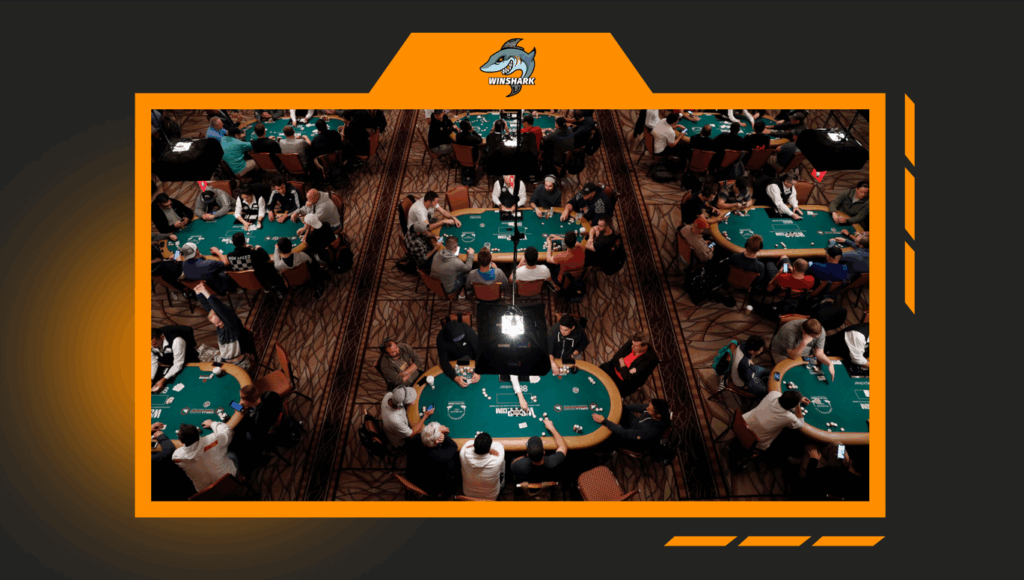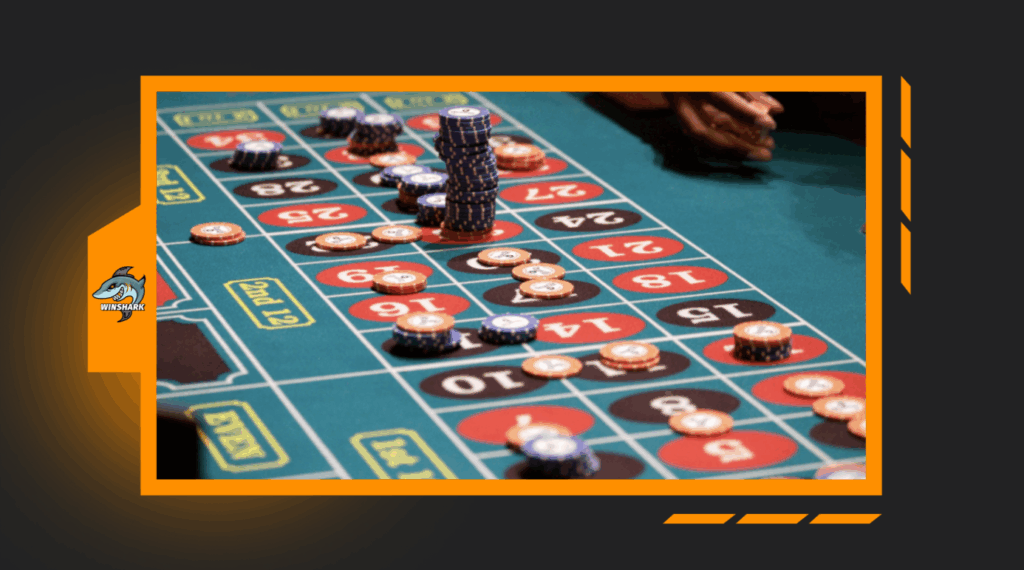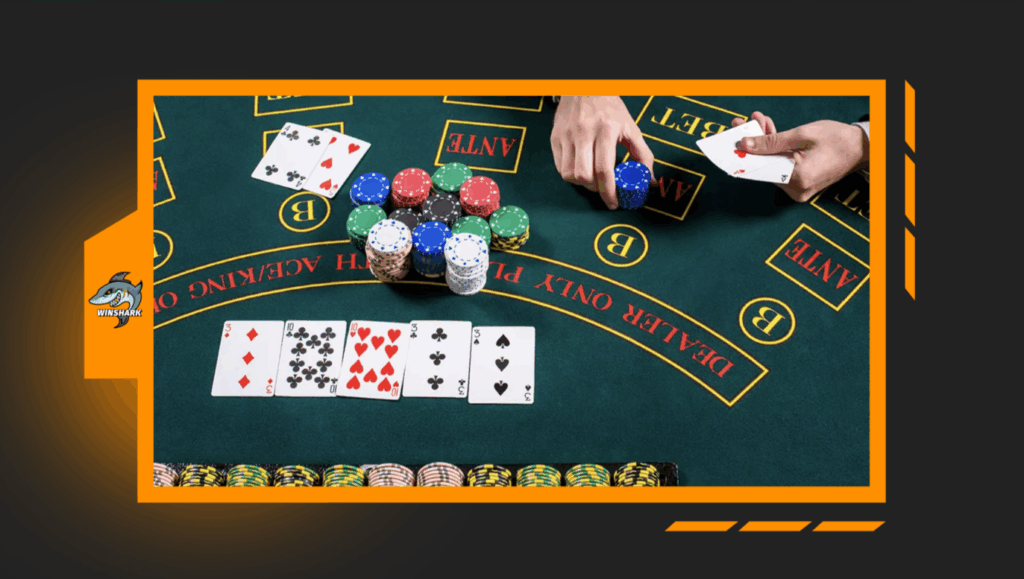Increase your chances of success in Winshark online casino tournaments
Consistent results come from a repeatable process, not luck. This guide shows how to read formats and set simple targets. You will learn to pick the right events and run a staged plan while protecting budget and focus. The same framework works across online casino tournaments and can be tailored to sprint races or longer series.

What exactly is a tournament and how Winshark structures it
A tournament is a scheduled event with a clear scoring model and a fixed prize pool. You don’t win on a single outcome; you win by outperforming other entrants within a defined session or calendar window. Winshark features sprint formats, daily races, and multi-day series, each with clear entry terms, eligible titles, and a live leaderboard.
Many events center on reel games and are traditionally known as online slot tournaments. Others emphasize table mechanics or equalized-win metrics. The lobby lists duration, qualification rules, the distribution of prizes, and whether re-entries are permitted. Understanding these basics prevents surprises once the clock starts.
Reading rules and scoring without guesswork
Every event dictates how points accumulate. Scoring typically falls into two families:
- Volume-weighted: points per spin or per unit wagered. Throughput is the main lever; long animations and pauses are costly.
- Magnitude-weighted: points favor large equalized wins (win divided by stake). Rare, high-volatility outcomes matter more than constant activity.
Even within online casino tournaments, tie-breakers, eligibility windows, minimum stake rules, and board refresh cadence can vary. Read for: whether bonus rounds count differently, any caps on points per session, and how prizes are split (top-heavy vs flatter distributions). Use the rules to set your targets.

Choosing the right event for your profile
Event selection is your biggest edge. Match format to strengths and risk budget:
- Pacing preference: If you excel at steady rhythm and focus, favor volume-weighted races. If you tolerate variance well, magnitude-weighted formats may suit you.
- Prize topology: Top-heavy ladders reward bigger swings; flat ladders suit steady top-20 finishes.
- Entry economics: Evaluate total cost including potential re-entries, then cap attempts before you join.
- Scheduling: Field size and time of day move the cut-line. Off-peak windows can make each point more valuable.
- Game familiarity: favor titles whose cycle time and bonus cadence you know well. Seconds matter, especially in online slot tournaments.
Foundations of a sustainable winning framework
A framework keeps you rational under pressure and makes results reproducible:
- Capital segmentation: Split your budget into labeled event units. Each entry consumes one no dipping into others without a pre-agreed rule.
- Staking policy: Set a base stake you can maintain at target pace across the full session. Predefine small, timed adjustment windows triggered by scoreboard gaps, not emotion.
- Tempo targeting: Establish a spins-per-minute baseline in rehearsal; design your environment to protect that tempo.
- Focus hygiene: preload titles, silence notifications, and clear your workspace. Fatigue and distractions silently erode precision.
- Decision protocol: One page covers when to change title, when to open a stake window, and when to shut a run down.
These foundations aren’t flashy, but they turn noisy activity into a process that travels well across casino formats.
The staged plan: from prep to post-event review
1) Scouting (previous day): shortlist events by format, length, eligible titles, prize map, and schedule. Draft a simple expected-value note: field size, likely placement band, and whether a re-entry ever makes sense.
2) Technical warm-up (T−15 minutes): confirm quick-spin (if available), check keyboard/tap rhythm, and run a 5–10 minute cadence rehearsal on a similar title to calibrate cycle time.
3) Opening block (first 10 minutes): hit baseline tempo before touching stake. Collect micro-data: actual spins per minute, any lag, actual points per block versus plan.
4) Middle stretch: if behind plan, raise throughput first; alter stake only in short, predefined windows. If comfortably ahead, reduce variance and preserve equity rather than experimenting.
5) Endgame (last 8–12 minutes): compare your position with the next prize rung. If the gap is small, open one final, brief adjustment window; if large, protect the current finish rather than forcing low-probability swings.
6) Post-event review (T+5 minutes): log tempo, stake range, points, titles used, rank, and two notes: “What helped” and “What hurt.” Decide on any re-entry with math, not emotion.

How to increase your chances of success
Improve by turning rules into simple habits you can execute on a timer. Translate the scoring model into numbers you control: target tempo, points per 10-minute block, maximum drawdown per entry, and a clear threshold for opening a stake window based on leaderboard gaps. Engineer your environment for uninterrupted focus and make changes only inside short, preplanned windows rather than reactive bursts. Prioritize uptime per minute: anything that reduces seconds between actions preset stakes, skipping optional animations where allowed, reliable input rhythm compounds into extra scoring events. Familiarity with the lobby and board refresh also saves attention, which you can reinvest in execution.
Advanced tactics for title selection and pacing
Once your fundamentals are solid, small, targeted adjustments can lift results without adding cognitive load. Use the tactics below as modular add-ons: enable one at a time, measure the impact, and keep only what clearly improves points per minute.
- Cycle-time scouting. Not all titles consume time equally. Where practice is allowed, compare a two-minute rehearsal across candidates and note real cycles. Favor games with short base-game animations and skippable features for volume-weighted formats.
- Variance zoning. In magnitude-weighted setups, plan two or three short windows when you will tolerate higher variance. Keep them early enough that, if they fail, you still have time to rebuild with base staking.
- Micro-benchmarks. Partition a 60-minute run into six 10-minute blocks with specific point targets. If you miss a block by more than 10%, change exactly one lever in the next block first throughput, then animation management, and only then stake.
- Field-sensitive scheduling. If participation swells at certain hours, consider less crowded windows. Smaller fields can lower the points required to podium, especially in online casino tournaments where a handful of high-tempo players can skew the cut-line.
- Title switching rules. Avoid impulsive hopping. Use a clear trigger such as “two consecutive blocks at <90% of plan with no bonus features” before swapping. Trade off sunk time against the potential for a fresher cycle.

Data, analytics, and iteration
Your logs are an asset. A simple sheet can track what moves results:
- Tempo metrics: planned vs actual spins per minute; time lost to distractions or long features.
- Stake map: how often you opened adjustment windows and what they produced.
- Placement deltas: how rank moved after mid-run changes.
- Title performance: which games delivered predictable cycles or bonus cadence.
Over a month, this archive reveals where your personal edge lives. You may discover your best results come from 45-minute sprints rather than 90-minute marathons, or that two specific titles produce higher effective points per minute. Align future entries with those findings, especially when preparing for online slot tournaments.
Common pitfalls and how to avoid them
Even strong plans can unravel because of a few predictable errors. Review the list below before each run, pick the one you’re most prone to, and set a simple countermeasure for it.
- Ignoring the scoring model. Playing a magnitude-weighted event as if it were volume-weighted (or the reverse) misaligns every decision afterward.
- Chasing without limits. Re-entering because of near-miss emotions burns the budget. Use pre-set caps and exceed them only if expected value supports it.
- Switching titles without a trigger. Changing for the sake of change costs time and tempo. Use the two-block rule above.
- Endgame over-reach. Tripling stake in the final minute usually destroys equity. If the gap is large, protect the finish rather than forcing a low-probability leap.
- Neglecting the environment. Noise, notifications, and clutter degrade precision. Guard focus is like a scarce resource.
Responsible participation and self-control
Treat entries as discretionary entertainment spend. Set a daily loss cap and honor it. Use time reminders, cool-off options, and other account tools in the platform. Respect fair play: one account per person, no automation, and strict adherence to published rules. The discipline that protects your budget also protects your enjoyment.

Prize distribution math and re-entry economics
Not all prize maps are created equal. A top-heavy structure concentrates most value in a few rungs, while a flatter map pays more places with smaller amounts. Translate the ladder into an expected-value snapshot before a run begins.
Estimate your realistic finish band given field size and historic performance. If your median result lands just outside paid places, a buy-in might still be rational if the probability of a high finish compensates for the downside. If a second attempt is allowed, evaluate it like a new entry, not a reaction.
A simple approach: multiply each meaningful finish band by its probability and sum the products, then subtract entry cost. If value is negative and your cap for the day is close, skip the attempt; a disciplined “no” preserves resources for a better spot. This is the same logic sharp players apply across the wider casino landscape: budgets are finite, and selectivity compounds.
Field dynamics: a short case study
Imagine two evening events with identical rules. The first attracts 1,200 entrants; the second fills to 600. In the larger field, the cut-line to reach the top 10% might rise by 10–15% because a handful of high-tempo specialists push the curve. In the smaller field, a moderate, steady pace could place you well inside paid positions without dramatic stake changes. Choosing the second event isn’t conservative it’s an efficient allocation of effort.
This is also where platform familiarity pays off. If you know when lobbies are busiest and how quickly seats fill, you can plan your day to avoid the sharpest traffic spikes. On the platform, this leads to calmer execution and a cleaner leaderboard path.

Worked example: turning rules into targets
Suppose a 60-minute race awards one point per spin and a small bonus for win streaks. Your rehearsal shows you can sustain 8 spins per minute without errors, for a baseline of 480 actions. Split the session into six 10-minute blocks and set 80 actions per block as the target. Allow two pre-authorized adjustment windows of 3 minutes each when a prize rung is within reach.
During block three you fall 12 actions behind. The protocol says: raise throughput first. You reduce pauses, skip optional animations where permitted, and finish the block only 4 behind with no stake change. In block five, a leaderboard check shows you are one rung below a significant prize. Open a single adjustment window, increase stake modestly, and close the gap. Every change follows the plan, not emotion.
Tools and settings that protect execution
Small quality-of-life features add up. Use search and filters in the lobby to pin eligible titles, keep a visible timer, and favor layouts that reduce mouse travel. Many account dashboards in a contemporary platform include time reminders, spending caps, and cool-off options. These controls don’t lower your ceiling; they protect focus and budget across a long season.
Inside the casino app, set default stake increments so you’re not fighting menus during a sprint. Where hotkeys are supported, practice until muscle memory handles routine confirmations. Keep the desktop clean: fewer windows, fewer mishits, more rhythm.
Final thoughts
Success in tournament play is rarely accidental; it comes from converting rules into targets and targets into steady execution. Choose events that fit your strengths, translate their scoring into practical metrics (tempo, points per block, drawdown limits), and protect your focus with a clean setup and clear decision rules. Manage capital in labeled units, use short, preplanned adjustment windows instead of impulses, and let the scoreboard not emotion determine when to push or to preserve equity.
After each run, log what mattered and refine one variable at a time. Over weeks, those small edits compound into reliable placements across online casino tournaments, especially in fast formats like online slot tournaments. Stay disciplined, respect your caps, and keep your process light but repeatable. Selection, pace, and measured risk lift you up the leaderboard.

 How To Play
How To Play Popular
Popular


Comments
Be the first to leave a comment!